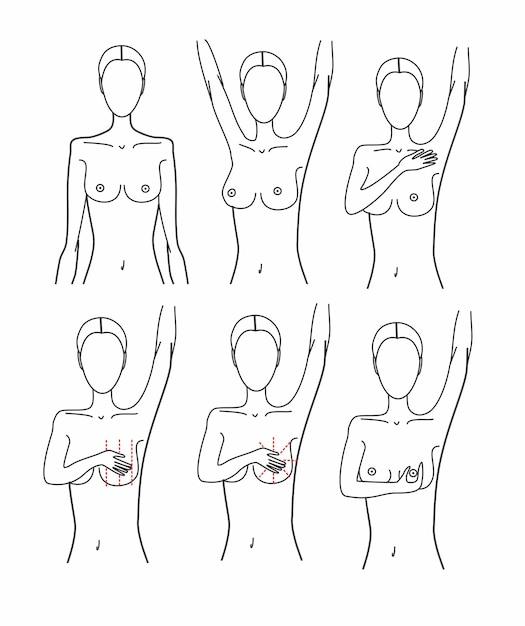Are you a nature enthusiast, a scientist, or simply someone who’s curious about the world around us? Ever wondered how experts categorize and identify different organisms? Enter the dichotomous key! Used by scientists across various fields, this handy tool helps classify organisms based on their key characteristics. In this blog post, we’ll explore the fascinating world of dichotomous keys, uncovering how they work, who invented them, and how you can create one yourself.
Dichotomous keys serve as the backbone of scientific identification. Think of them as a series of yes-or-no questions that guide you through a series of choices until you reach the correct identification. They provide a systematic approach to categorizing organisms, paving the way for clearer understanding and effective communication within the scientific community. Whether you’re a student studying biology or an aspiring naturalist, learning how to create a dichotomous key is an invaluable skill that allows you to delve deeper into the diverse realm of nature.
So, are you ready to unlock the secrets of identification with a dichotomous key? Join us as we embark on this exciting journey, where we’ll learn about the different types of dichotomous keys, their origins, and step-by-step instructions to create your very own. Let’s dive in and unravel the mysteries of the biological world, one question at a time!

How to Create a Dichotomous Key
So you want to create a dichotomous key? Well, buckle up, because we’re about to dive into the exciting world of classifying organisms in a way that would make even Linnaeus proud. Here’s a step-by-step guide to help you on your journey:
Step 1: Define Your Scope and Purpose
Before you embark on your dichotomous key adventure, you need to determine what group of organisms you want to classify and why. Whether it’s birds, bugs, or bananas, clarifying your scope will help you create a more focused and effective key. So ask yourself, “What am I trying to achieve with this key? What specific characteristics or traits do I want to focus on?”
Step 2: Gather Your Organisms
Now that you have a clear idea of what you want to classify, it’s time to gather your specimens. Head out into the wild, or maybe just to your local zoo, and start observing and collecting your chosen organisms. Remember, don’t take too many bananas from the grocery store or you might get in trouble!
Step 3: Identify Key Characteristics
Once you have your organisms, it’s time to identify the key characteristics you will use to classify them. These can be anything from physical features like color, shape, or size, to behavioral traits or habitat preferences. Get up close and personal with your specimens, take notes, and really appreciate the wonders of nature. Just make sure not to get too close to those bugs!
Step 4: Group Your Organisms
Now that you have identified the key characteristics, it’s time to group your organisms based on those traits. Start by creating broad categories that include multiple organisms, and then narrow down your groups by focusing on specific traits. This process of elimination will eventually lead you to individual species. Remember, it’s like playing a game of 20 questions with nature!
Step 5: Create Your Key
Ah, the moment you’ve been waiting for—creating the actual dichotomous key! This is where your organizational and writing skills come into play. Start with a broad statement that divides your organisms into two major groups based on a specific trait. Then, continue to divide each group into two smaller groups based on additional traits, until you reach a specific species. Keep it simple, clear, and logical. And don’t be afraid to have a little fun with your descriptions—the quirkier, the better!
Step 6: Test and Refine
Congratulations, you’ve created a dichotomous key! But before you declare yourself the next Darwin, it’s important to test and refine your key. Grab a friend, a fellow nature enthusiast, or even a pet (if they’re patient enough) and let them give your key a whirl. Pay attention to any confusing or ambiguous steps and make adjustments as needed. After all, the key to a good key is clarity and accuracy!
And there you have it—the secret recipe for creating a dichotomous key. So get out there, embrace your inner naturalist, and let the classification games begin! Now, if you’ll excuse me, I have some bananas to sort.

FAQ: How do you create a dichotomous key
Do scientists use dichotomous keys
Certainly! Scientists from various fields rely on dichotomous keys to identify organisms. From botany to zoology, professionals use this handy tool to classify and categorize the vast array of species that exist in the world.
Can multiple dichotomous keys be developed to identify the same group of organisms
Absolutely! In fact, different scientists may develop their own unique dichotomous keys for the same group of organisms. The beauty of dichotomous keys lies in their flexibility, allowing experts to approach identification from various perspectives.
How do you create a dichotomous key
Creating a dichotomous key is like solving a fascinating puzzle. To embark on this joyful quest, follow these simple steps:
-
Choose a group of organisms: Identify the group of organisms you intend to classify. It can be anything from plants to insects or even marine life.
-
Gather characteristics: Observe and note down the distinct features of each organism within the chosen group. Pay attention to their physical attributes, behavior, or any other defining traits.
-
Identify contrasting characteristics: Determine the characteristics that distinguish one organism from another. Look for traits that have clear binary choices, such as presence or absence of certain structures, size, color, or habitat.
-
Create branching steps: Organize your characteristics into a series of branching steps. Each step should present a clear choice between two contrasting options, leading the user closer to the correct identification.
-
Provide clear descriptions: Alongside each branching step, describe the traits associated with each choice. The descriptions should be concise, informative, and easy for users to understand.
-
Continue branching: Repeat the branching process until the user reaches the final identification of the organism. Each step should offer a distinct choice and lead to a specific outcome.
What are the two types of dichotomous keys
Dichotomous keys can be categorized into two main types:
-
Lateral Dichotomous Key: In a lateral dichotomous key, the choices are presented side by side, allowing users to compare traits directly and make a selection based on the provided information.
-
Indented Dichotomous Key: In an indented dichotomous key, the choices are presented in an indented format, creating a hierarchical structure. This type of key is often more detailed and offers a step-by-step approach in making identifications.
Which distinction would a dichotomous key not identify
A dichotomous key is an excellent tool for identifying organisms based on their physical characteristics. However, it may not be suitable for identifying certain distinctions such as genetic variations, physiological processes, or behavioral traits.
Who invented the dichotomous key
The brilliant mind behind the dichotomous key is none other than the Swedish botanist Carl Linnaeus. In the 18th century, Linnaeus revolutionized the field of taxonomy by developing a system to classify and name organisms, including the creation of dichotomous keys.
What makes a dichotomous key easy
A well-designed dichotomous key is like a well-crafted riddle—challenging yet enjoyable to solve. To make a dichotomous key user-friendly, ensure the following elements:
- Clear language: Use simple, straightforward language that is easy to understand, even for beginners.
- Concise descriptions: Provide concise descriptions for each choice, avoiding overly technical jargon.
- Logical flow: Ensure a logical flow of choices, with distinct binary options at each branching step.
- Well-organized structure: Present the key in a visually organized manner, using indentations or side-by-side layouts for clarity.
Do dichotomous keys go from general to specific
Absolutely! Dichotomous keys typically start with more general characteristics and gradually become more specific as users progress through each branching step. This intentional design helps narrow down the options until the precise identification is reached.
What does “Di” mean in dichotomous
The prefix “di” in the term “dichotomous” comes from the Greek word meaning “two.” Reflecting this, a dichotomous key presents users with two distinct choices at each branching step, facilitating the process of identification.
What is a biological dichotomous key
A biological dichotomous key is a classification tool used to identify organisms based on their biological attributes. It relies on observable physical characteristics, providing users with a systematic approach to determine the correct species within a given group.
Now that you’re armed with knowledge on creating a dichotomous key, go forth and unlock the secrets of the natural world! Happy identifying!
